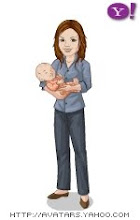I am continuing to read Complete Copyright for my research for this blog. I really enjoy the format as I explained in my first entry. It's a nice departure from the textbooks I have to read. I guess I am starting to behave like the teenagers I work with because I am draw more to the graphics and sidebars. He-he!
My most recent reading has taught me about fair use, "the grandest exception," to copyright. (p19). Fair use is what allows teachers and librarians to use copyrighted works without getting permission from the creator. This idea I had a grasp on, but what I found interesting is that even educators, as well as school librarians, may not always be able to cite fair use when conducting lessons or reviewing student work. Fair use is a broad expression. Educators must consider these four factors when determining if their school project meets the fair use requirements.
#1 - Purpose of the use. Clearly, most school assignmnet are for educational purposes and should be safely under the fair use umbrella. However, consider activites conducted after school. Sports, fundraisers and the like could be teetering on the boundaries of fair use.
#2 - Amount of the whole work. Photocopying a page or two from a text would be a small portion of the whole, and therefore fair use. However, I know of a teacher who photocopied an entire novel for her classroom when funds were not available to purchase a class set of books! Without doubt she has stepped outside of the fair use boundary.
#3 - Nature of the publication. If a student work goes unpublished and is largely facutal in nature, for example a web site on Benjamin Franklin the teacher's assignment is acceptable according to fair use.
#4 - Effect on the market. Take my example from above, this particular teacher's act infringed on the opportunity to sell that novel, thereby effecting the market for sale. This is not fair use.
What I took away from this evening's readings is educators need to weigh these factors when making decisions for their schools and classrooms. Fair use is a grand exception, but only for the right conditions. We must still exercise good judgement when it comes to matters of copyright.
Russell, C. (Ed.). (2004). Complete copyright: An everyday guide for librarian. American Librarians Association.
Tuesday, October 7, 2008
Subscribe to:
Post Comments (Atom)

2 comments:
Michelle,
Thank you for that summary of Fair Use. As a teacher, I need to be aware of what constitutes fair use for my classroom.
Thank goodness for fair use. I don't know if we could teach if we didn't have fair use in schools. We wouldn't have any materials!
Post a Comment